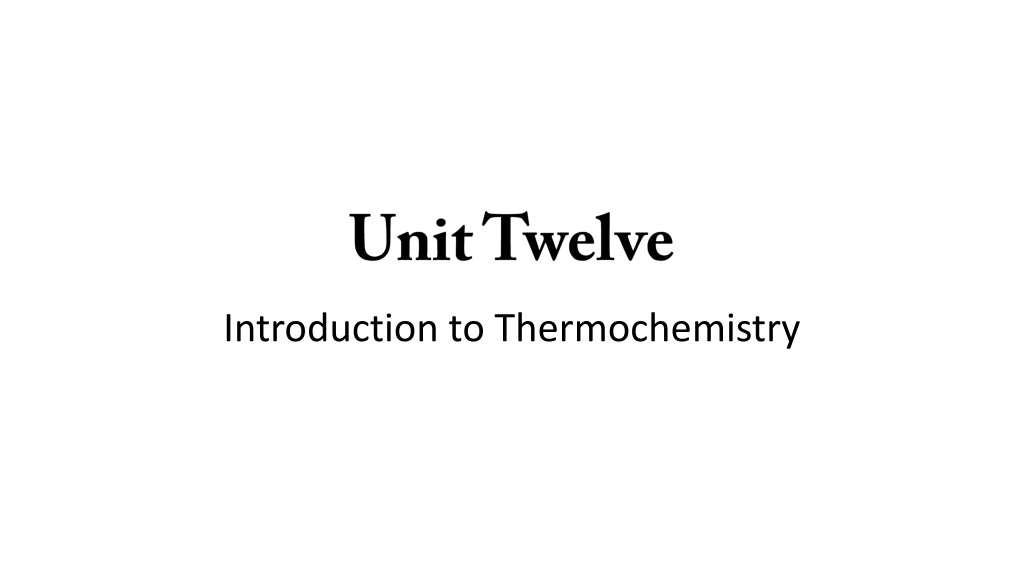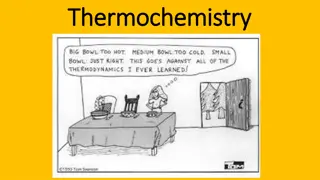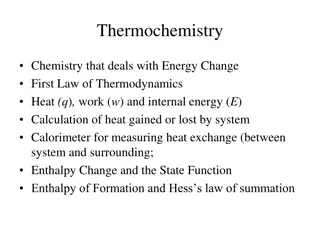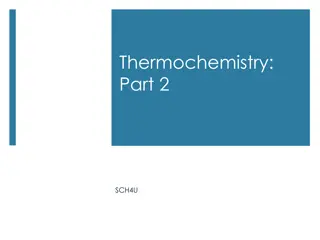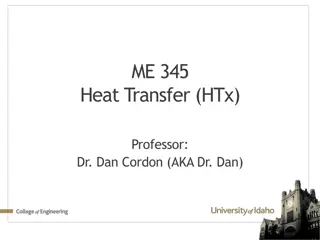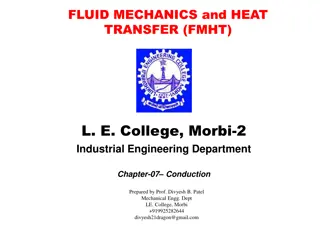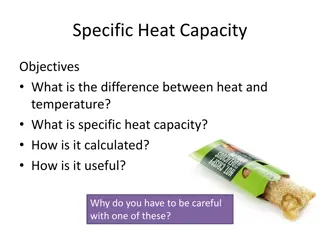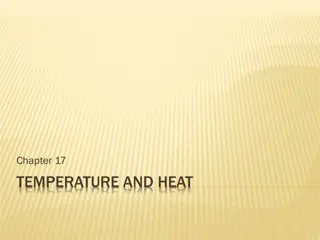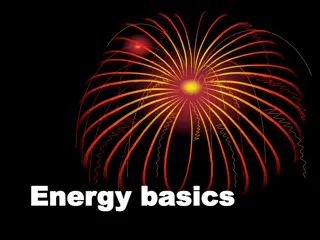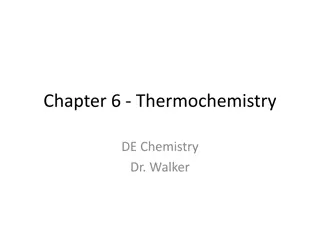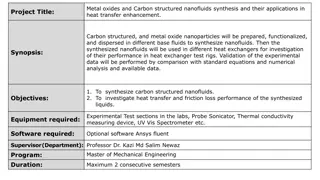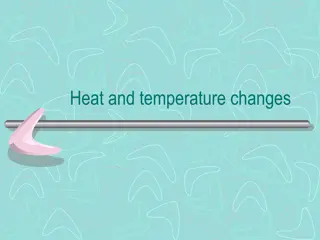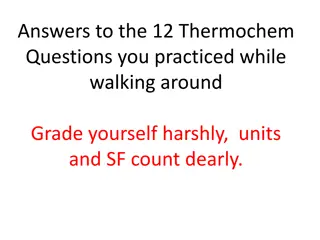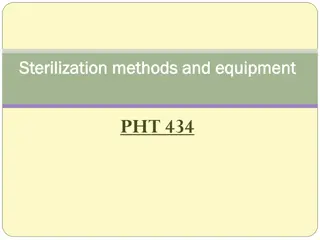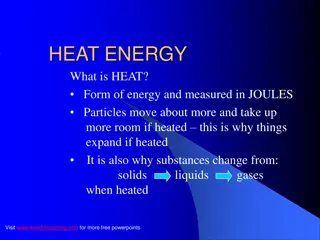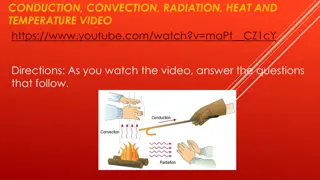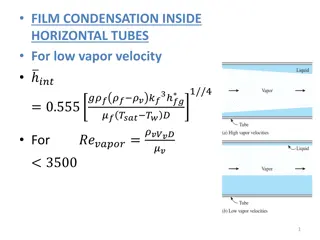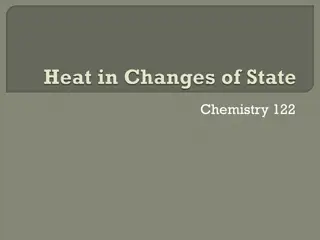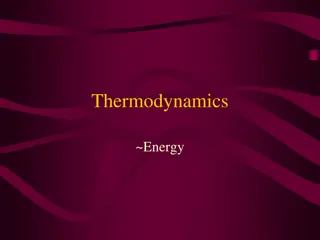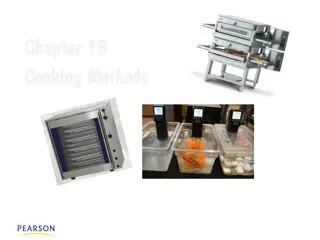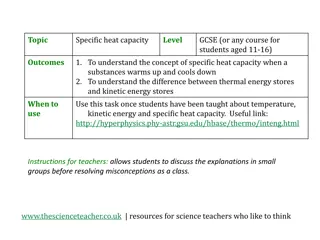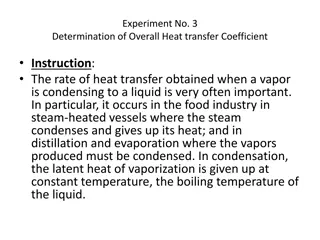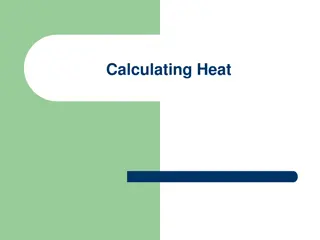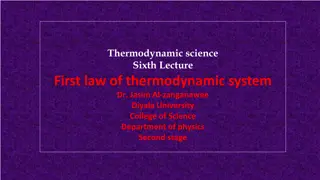Exploring Thermochemistry and Heat Energy Transfer
Thermochemistry involves the transfer of heat energy during chemical reactions and physical changes. Understanding concepts like enthalpy, heat capacity, and energy flow is crucial. The high heat capacity of water plays a vital role in moderating temperature changes in the environment. The law of conservation of energy highlights that energy is transferred but not created or destroyed in chemical and physical processes.
Download Presentation

Please find below an Image/Link to download the presentation.
The content on the website is provided AS IS for your information and personal use only. It may not be sold, licensed, or shared on other websites without obtaining consent from the author. Download presentation by click this link. If you encounter any issues during the download, it is possible that the publisher has removed the file from their server.
E N D
Presentation Transcript
Thermochemistry: Thermochemistry is defined as the transfer of energy as heat that accompanies chemical reactions and physical changes. In chemistry, thermochemistry helps us to understand the flow of heat energy that occurs in a physical or chemical process. Note to self: we did this already when we looked at the heating curve of water! The ice had to absorb energy in order to melt and then to evaporate.
Useful facts about heat energy (enthalpy): Useful facts about heat energy (enthalpy): Heat energy is called enthalpy and the symbol for change in enthalpy is H . Heat is measured according to temperature . Temperature defines kinetic energy so basically, this describes how fast the molecules are moving. Heat transfer is always from hot to cold . Heat transfer will continue until the temperature is the same (equilibrium). When studying heat transfer, it is important to recognize the direction of heat flow.
Heat Capacity: Heat capacity- is the measure of the materials storage capacity for thermal energy (heat). Heat capacity is measured as the energy required to raise the temperature of a given material by 1 C. Low heat capacity- takes less energy to heat up High heat capacity- takes more energy to heat up and can store more thermal energy.
Heat capacity & the ocean The high heat capacity of water (4.18J/g C) is very important to our weather and environment. Because oceans are so large they can store a lot of energy. They help to moderate temperature changes.
The law of conservation of energy states that: The law of conservation of energy states that: Energy cannot be gained nor lost during any chemical or physical process, but it can be transferred . That means when something feels cold or warm, energy is simply being transferred.
Understanding Energy Flow & System Understanding Energy Flow & System- -Surrounding Surrounding System = the material or process that is being studied Surrounding = anything outside the system that can give/absorb heat. For an endothermic process the system absorbs energy from the surround. Draw and arrow to describe this flow of energy. Endothermic For an exothermic process, the system releases energy to the surrounding. Draw and arrow to describe this flow of energy. exothermic
Identify the system and surroundings Identify the system and surroundings. Hand warmer Ice pack Burning match Melting ice cube NaOH (aq) NH4Cl (aq) MgO + HCl
Graphing activity and heat energy (enthalpy) : Graphing activity and heat energy (enthalpy) : ____ MgO + ____ HCl ____ MgCl2 + ____ H2O Title: _______________ TIme (min) (x-axis) Temperature ( C) (y- axis) C 0 20 1 24 2 27 3 29 Time (min.) 4 29
: Describing heat transfer for an exothermic reaction: During an exothermic process energy is _____________ . (absorbed or released) The reactants start at a _____________ (high/low) energy. The products formed are at a _________ (high/low) energy state. The reaction will feel __________________ (warm/cold)
During an endothermic process energy is a _____________ . (absorbed or released) The reactants start at a _____________ (high/low) energy. The products formed are at a _________ (high/low) energy state. The reaction will feel __________________ (warm/cold)
Calculations and specific heat capacity: Calculations and specific heat capacity: Reminder: heat capacity defines a materials ability to store thermal energy. Specific heat capacity (s) = the amount of energy (J) required to raise 1 g of a substance 1 C. Useful equation: q = m s T m = mass in grams (g) q = energy in Joules (J) s = specific heat T = change in temperature (final initial)
Specific heat capacity problems: Equation: q = m s T How much heat does it take to raise the temperature of a piece of copper that weighs 10.0 g from 15oC to 46oC? The specific heat of copper is .334 J/goC. m = 10.0g s = .334 J/g C T= 46 C-15 C = 31 C Answer: 103.5 J
How much heat does it take to raise the temperature of 25.0g of water from 23 oC to 100oC? The specific heat of water is 4.18 J/g oC. m = 25.0g s = 4.18 J/g C T= 100 C- 23 C = 77 C Answer: 8,047J
Specific heat problem: What is the enthalpy of solution in J/g if 4.35 g of NaOH is dissolved into 110 g of water. The temperature of the water changes from 23oC to 27oC. The specific heat of water is 4.18 J/g oC Solve for q : m = 4.35g + 110g = 114.35g s = 4.18 J/gC T = 27C-23C = 4C answer : q = 1906 J Enthalpy of solution J/g NaOH answer : 438J/g NaOH Is this exothermic or endothermic? Justify your answer. Answer: exothermic the water (surrounding) absorbed energy from the NaOH (system)
